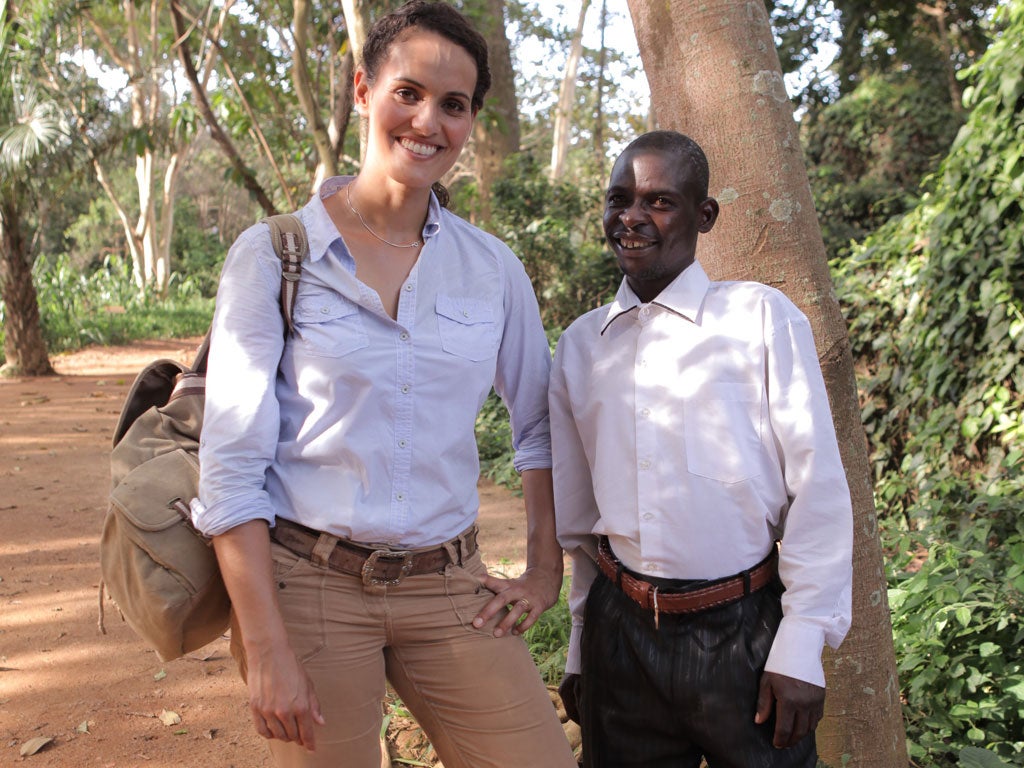Raised in the wild: tales of survival
Many cases of feral children are hoaxes, but a new film examines the disturbing phenomenon of the real thing

A unique insight into the world of feral children – infants abandoned or neglected by mankind but surviving under the care of wild creatures – will be broadcast this week after one of the biggest studies to date of the phenomenon.
Feral Children, which starts tomorrow, is the result of a year of research attempting to unravel the reality of three cases of children who have grown up in the wild.
They include the tale of John Ssebunya, a Ugandan man who was a toddler when his mother died. Instead of being taken into care the boy sought sanctuary with vervet monkeys, spending more than two years learning how to search for food as well as travel.
"They guarded me and gave me protection," he recalls in the film. He even grew fur around his face and body and learnt to move in trees. Now 28 and fully rehabilitated, he believes his experience brought him closer to primates. But others recall the time differently. One villager describes his return to civilisation a few years later: "Here was a boy no more than seven. He was skinny and just squatting. He lacked proper speech and could only cry and demand food. He was totally wild. Everyone was scared of this wild boy."
In the late 1970s Sujit Kumar was locked up in a chicken coop under a Fijian house on the outskirts of the capital, Suva. His parents thought he was either retarded or demented, and treated him as they did the fowls that lived under their house. It wasn't until years later that Kumar was found in the middle of a road. He'd been left abandoned, clucking and flapping his distress. The film shows him now aged 40 and recovered after decades of therapy.
Also included in the three-part series is Oxana Malaya, who was discovered at the age of eight in 1991 having spent most of her time at a Soviet orphanage with dogs.
There have been more than 100 documented examples of feral children in the last 20 years. While many of these have proved to be hoaxes, the figure for genuine cases could be far higher, according to experts who believe some people's experiences go unreported.
Wolves, dogs, even ostriches are said to have helped abandoned children survive in the wild. One of the most famous cases is that of Victor of Aveyron, found in woods near Toulouse, in southern France, in 1797. Believed to be about 12, he was studied by scientists, who tried without success to teach him to speak. His story inspired François Truffaut's film, L'Enfant Sauvage, in 1970.
The British anthropologist Mary-Ann Ochota, who researched and presents the documentary, believes there are still more than 100 children alive today surviving without the care of humans but in close proximity to animals. A good number of those, she believes, are incarcerated in animal pens, coops or outhouses.

Watch Apple TV+ free for 7 days
New subscribers only. £8.99/mo. after free trial. Plan auto-renews until cancelled

Watch Apple TV+ free for 7 days
New subscribers only. £8.99/mo. after free trial. Plan auto-renews until cancelled
"Most of them are hidden, and will die without their plight being revealed," she said.
The documentary, which is broadcast on Animal Planet, a cable channel, is intended to show that feral children's stories can become ones of recovery and recuperation. But it also counsels caution about the phenomenon.
"Many feral cases are hoaxes, many are vastly elaborated tall tales," says Dr Ochota. Often the reality is more about child abuse and neglect, rather than incredible Mowgli- or Tarzan-style heroics.
"The fates of these feral children can reveal uncomfortable truths about how we treat people who are different to ourselves," she adds, "but they can also show how caring and compassionate we can be."
The girl who turned to dogs for warmth and friendship
Oxana Malaya was eight when she was brought to an orphanage in Ukraine.
Accounts suggest she spent her time with the orphanage dogs, even trying to smuggle them into the dormitories.
The programme shows how she began to imitate the dogs as a mental escape from the trauma of the orphanage.
They offered physical comfort and an emotional connection she couldn't get from others.
Her behaviour escalated and she was eventually referred to Makarenka Correctional Orphanage in Odessa, where she was slowly rehabilitated. She now lives in an adult care facility where the residents help run a farm.
She has mild learning disabilities and can't live independently. She says she sometimes crawls on all fours.
Subscribe to Independent Premium to bookmark this article
Want to bookmark your favourite articles and stories to read or reference later? Start your Independent Premium subscription today.

Join our commenting forum
Join thought-provoking conversations, follow other Independent readers and see their replies
Comments